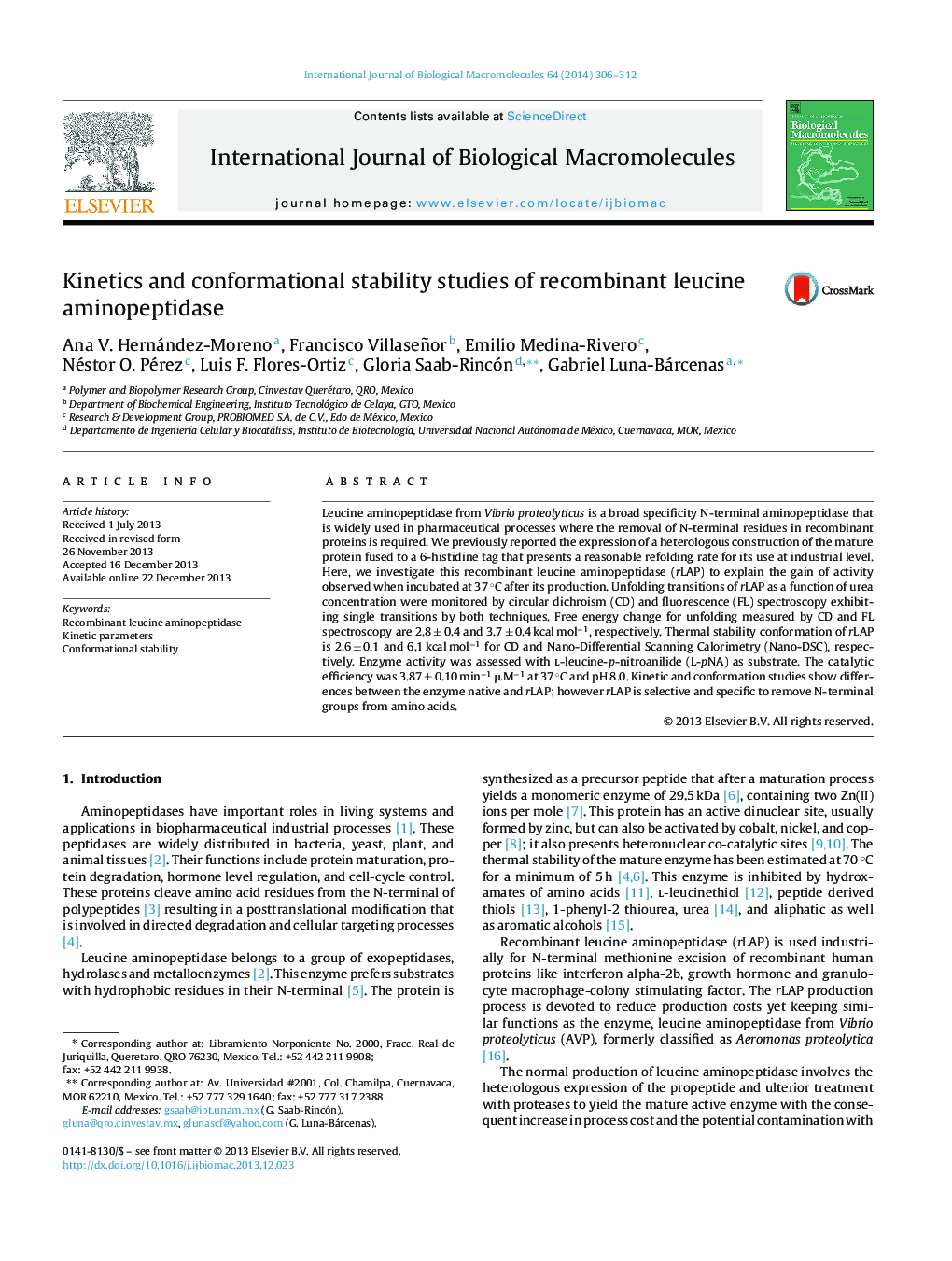| Article ID | Journal | Published Year | Pages | File Type |
|---|---|---|---|---|
| 1986636 | International Journal of Biological Macromolecules | 2014 | 7 Pages |
Abstract
Leucine aminopeptidase from Vibrio proteolyticus is a broad specificity N-terminal aminopeptidase that is widely used in pharmaceutical processes where the removal of N-terminal residues in recombinant proteins is required. We previously reported the expression of a heterologous construction of the mature protein fused to a 6-histidine tag that presents a reasonable refolding rate for its use at industrial level. Here, we investigate this recombinant leucine aminopeptidase (rLAP) to explain the gain of activity observed when incubated at 37 °C after its production. Unfolding transitions of rLAP as a function of urea concentration were monitored by circular dichroism (CD) and fluorescence (FL) spectroscopy exhibiting single transitions by both techniques. Free energy change for unfolding measured by CD and FL spectroscopy are 2.8 ± 0.4 and 3.7 ± 0.4 kcal molâ1, respectively. Thermal stability conformation of rLAP is 2.6 ± 0.1 and 6.1 kcal molâ1 for CD and Nano-Differential Scanning Calorimetry (Nano-DSC), respectively. Enzyme activity was assessed with l-leucine-p-nitroanilide (L-pNA) as substrate. The catalytic efficiency was 3.87 ± 0.10 minâ1 μMâ1 at 37 °C and pH 8.0. Kinetic and conformation studies show differences between the enzyme native and rLAP; however rLAP is selective and specific to remove N-terminal groups from amino acids.
Related Topics
Life Sciences
Biochemistry, Genetics and Molecular Biology
Biochemistry
Authors
Ana V. Hernández-Moreno, Francisco Villaseñor, Emilio Medina-Rivero, Néstor O. Pérez, Luis F. Flores-Ortiz, Gloria Saab-Rincón, Gabriel Luna-Bárcenas,
